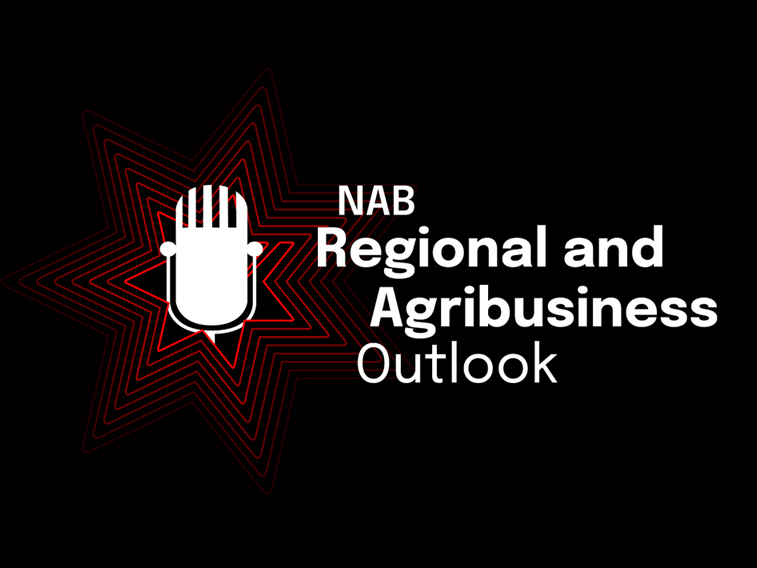Take a closer look at Australia’s Farm Management Deposits scheme with NAB senior leaders.

Podcast
While most of their neighbours were growing food crops for the domestic market, the Salvettis of North Queensland Tropical Seeds (NQTS) diversified their seed, grain and legume crops with traceable Australian-grown chia, tapping into lucrative offshore markets.
Doing things differently sums up Maryann and Dennis Salvetti’s attitude to crop selection.
While most of their neighbours were growing food crops for the domestic market, the Salvettis diversified their seed, grain and legume crops with traceable Australian-grown chia. The clean, green chia joins a long line of over 20 different crops, ranging from nitrogen-fixing legumes, pasture seeds and hay, many of which the family already exports to Asia, the Middle East, New Guinea, the US and Africa.
Maryann and Dennis Salvetti’s North Queensland Tropical Seeds (NQTS) business works three farms spread across 50 kilometres of the Atherton Tablelands in Far North Queensland. This gives them the diversity and contamination-free space needed to produce more than 20 unique export-specific pasture crops.
“People are always asking me what’s in my front paddock. It’s usually something they haven’t seen before. We’re the only people in Australia who grow a lot of our crops,” says Maryann.
Originally from Melbourne, she was on holidays in the region when she met Dennis and decided to stay. Their three children – now adults – also work in the business with them.
A lot of NQTS crops are destined for farmers in developing countries. Some of NQTS’s direct clients are government grant agencies. Many of their crops have been developed with the CSIRO, via Australian aid programs, to answer a specific region’s needs.
The Salvettis are firm believers in being specialists. “It’s the only way to work in niche markets,” says Maryann. “We’re the seed specialists, our partners are Australian export specialists, and agencies like the CSIRO are our R&D specialists.”
Among NQTS’s current crops are Desmodium for dairy cattle pasture in Africa and Rongai Dolichos legumes for cattle feed and green manure in South America.
“There’s no one-size-fits-all crop which means we’re always testing, learning and improving. It keeps us on our toes and keeps farming interesting. It’s eight to ten years before something new is ready for market so it’s a long-haul game. Multigenerational.”
While supplying particular niche markets are fundamental to the success of NQTS, the business model is safeguarded by diversity. This equates to a variety of markets and also diversity in land and climate across their three farms.
“When we bought the other farms, we were looking to set ourselves up geographically, for crop diversification,” says Maryann. “Even though it is a great family lifestyle up here, you’ve always got to view farming as a business to be profitable.”
Until very recently, the only consumer crop grown by NQTS was sugarcane. While it’s not a large crop for the family, it does provide a link to their farming past and serves as a crop rotator. And the family can’t help but experiment with nitrogen-fixing enrichers for it. Soybeans are a new green manure crop for cane and one that farmers around the world are interested in. NQTS is busy trialling soya varieties for different sugarcane growing climates.
Recently, the Salvettis have diversified into another consumer crop – Australian-grown chia. They planted 50 hectares on their irrigated Tolga farm after answering an ad in an agricultural newspaper. It’s the first chia to be grown in Queensland. The gamble is paying off internationally with their chemical-free chia about to enter the expanding Chinese health food market.
Chia is the latest in a long list of well planned and executed exports to Asia, the Middle East, New Guinea, the US and Africa. Now, with local and international retailers, wholesalers and manufacturers wanting their fully traceable chia, for the first time, the Salvettis have decided to sell under their brand name, Australian Superfoods NQ.
The Salvettis are capitalising on Australia’s low levels of pest-and-soil-borne disease and the reputation it gives their chia by allowing the seeds to dry before being carefully harvested, thoroughly cleaned and packed in their fully licensed seed-processing shed. “Clean, green and fully traceable is the way we work, and the Chinese market loves it,” says Maryanne.
The Salvetti family mantras of “no mainstream commodities” and “no putting all your eggs in one basket” have reaped fertile export rewards.
Maryann – an ABC Queensland Rural Woman of the Year and recognised in the Women in Australian Agribusiness 100 in 2014 – is always on the lookout for opportunities and uses her love of talking to find her next potential crop idea.
Are they worried what the neighbours think of their non-traditional crops? No. One of their crops is Gatton Panic, a soil improving grass used under avocado trees.
Originally grown for farmers in North and South America, it is now successfully fertilising the plantations of some of their Atherton Tableland neighbours.
Not a bad result for local knowhow – even if Maryann is a long-time blow in from Melbourne.
More from NAB:
© National Australia Bank Limited. ABN 12 004 044 937 AFSL and Australian Credit Licence 230686.